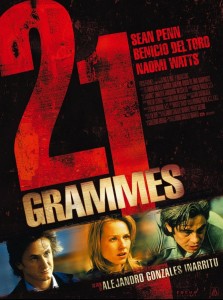By Jon Raymond
Ted Hope posted about the poor state of indie film distribution, his frustration with deals that pay out so little that screw indie producers, and how he’s decided to stop producing. This marks a turning point. I had to respond with this comment:
The main reason indie films have distribution problems has to do with compulsive behavior to take whatever deal you can get. [Distributor-Sales Agent] Lists are good, if they are vetted. There are a lot of unscrupulous players out there. And even with good distributors and sales agents, you have to hold out for the terms you want.
If indie filmmakers keep signing all rights deals, then that becomes the norm. If we give distributors 20% off the gross, or add P&A expenses first, then that becomes the norm. These things kill independent film.
I’m pretty sure that in any other industry, the manufacturer is paid a wholesale price for product. If it’s not all sold there may be some return. But you don’t see retail outlets deducting advertising costs from sales or taking 20% off the remainder sales gross before the manufacturer sees a dime. No manufacturer would agree to those terms. Why do we?
I’m pissed that the guy who produced 21 Grams doesn’t want to produce more films, and because I think it’s the fault of most indie filmmakers who take bad deals.

Every time a producer signs an all rights deal without a six month performance agreement, or with a back-end 20/80 split after unaccountable P&A (publicity and adverting), they are hurting all of our chances to make a sustainable living with film. Maybe filmmakers need more education.
 You’re an indie filmmaker. You can get by with relatively inexpensive equipment, cast and crew and make movies. I made a short a few years ago for $3K, just for camera, sound, and editing software. Then I used the same stuff to do another one for the cost of feeding the cast and crew, about $500. A few years later I made a feature doc for $3K with some new HD stuff. But you don’t need a cast or crew for docs. All you need is a camera, editing software, and great events to attend. However, if you do want a cast and crew, and you don’t happen to know film school buddies willing to work for free, you really have to pay them, and you may need locations, props, and so on. So we see budgets more likely starting at $50K to $500K for first time feature director narratives.
You’re an indie filmmaker. You can get by with relatively inexpensive equipment, cast and crew and make movies. I made a short a few years ago for $3K, just for camera, sound, and editing software. Then I used the same stuff to do another one for the cost of feeding the cast and crew, about $500. A few years later I made a feature doc for $3K with some new HD stuff. But you don’t need a cast or crew for docs. All you need is a camera, editing software, and great events to attend. However, if you do want a cast and crew, and you don’t happen to know film school buddies willing to work for free, you really have to pay them, and you may need locations, props, and so on. So we see budgets more likely starting at $50K to $500K for first time feature director narratives. 


 If you aren’t shooting in 4K (aka Ultra HD or UHD), you’re two years late. In two years from now any film you shot in HD will be as obsolete as the stuff you shot in SD. But don’t take my word for it, and expect that within a few weeks or sooner, there will be new advances announced.
If you aren’t shooting in 4K (aka Ultra HD or UHD), you’re two years late. In two years from now any film you shot in HD will be as obsolete as the stuff you shot in SD. But don’t take my word for it, and expect that within a few weeks or sooner, there will be new advances announced. 